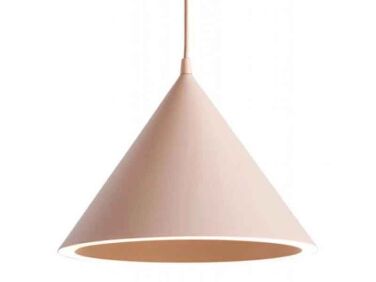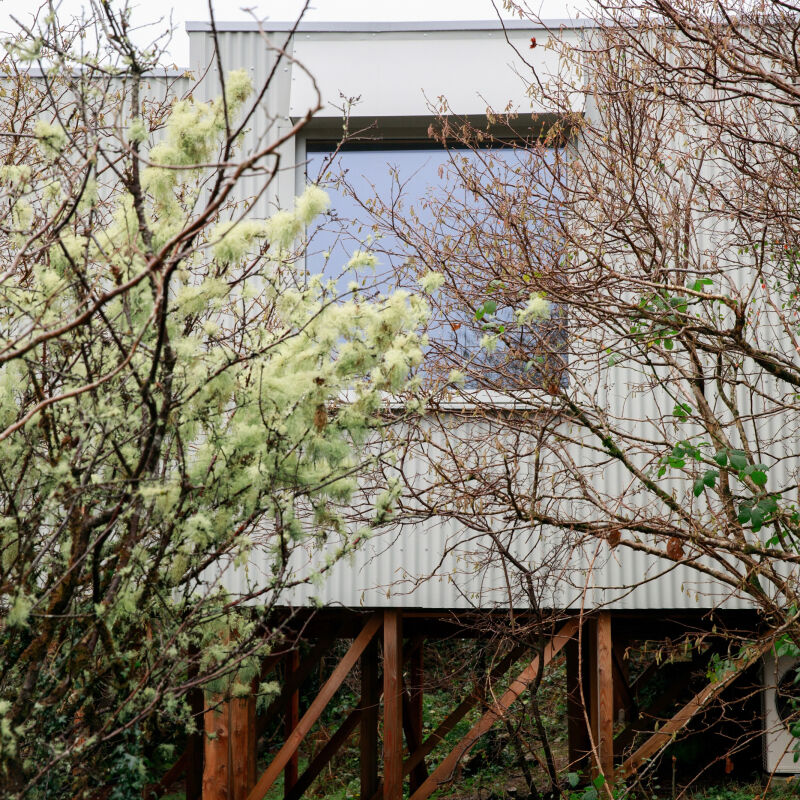Joan Barton established Dirty Girl Construction in Los Angeles back in 2008, becoming one of few women builders in this country. She’s also been on the vanguard of responsible, eco-conscious approaches to construction. And a longstanding go-to source for us when we’re looking for remodeling and building advice from the trenches.
As we were working on our new book, Remodelista: The Low-Impact Home, we asked Joan about approachable ways to cut down on waste during home renovations of all sorts. Without hesitating, she supplied us with the following punch list in her words.
1. Source locally.
We all want a house that is uniquely our own, which often means looking for items you don’t see on the daily. However, shipping carries a large carbon footprint, even more so when it’s a single item. So, while it’s fine to web browse globally, spend time finding the same or similar items from local artisans, antiques dealers, and salvage yards. This approach supports the neighborhood economy, reduces consumption, usually saves money, and forms relationships that can last a lifetime. It’s also meaningful to know the hands that helped create your home.

2. Buy before you build.
Select and purchase every finish and fixture you feasibly can ahead of breaking ground. If your builder doesn’t have warehousing space, rent space. Lead-times have grown from 2-10 weeks to 8-32 weeks, translating into time delays and financial increases. Prebuying allows your project to move forward on calendar and budget, and it affords you the opportunity to return any damaged items for replacement prior to move in. What happens if you change your mind after a purchase, you ask? Well, for those of you wearing capricious pants, please refer to item #9.

3. Consolidate deliveries.
It takes multiple shopping excursions to decide what you’re going to buy, however, it’s entirely possible to minimize deliveries. Once your vendors have received your wares, arrange to pick up everything in one or two trips, starting at the furthest location and working your way back to the drop point. This little bit of planning—which may require renting a truck or hiring a delivery service—saves time and reduces fuel consumption as well as air and noise pollution.

4. Stop writing checks.
How much does it cost to write a check? Too much! Between the material costs and the labor to process and deliver, there’s an incredible amount of freight on this itty-bitty item. And from our experience, mailed checks have a high rate of going astray. Instead, set up a way to pay via ACH, Venmo, PayPal, credit card, or QuickBooks—wiring saves time, paper, and fuel and is the eco-better approach.
5. Meet virtually.
Most building matters do not require everyone gathering at the site each week. Our firm has been meeting virtually with our teams and clients for over a decade. We can review plan sets, site conditions, and materials by uploading detailed photos, videos, and files for discussion, and by remote-viewing job sites via live feed. I’m also happy to report that since the start of the pandemic, many cities have adopted an online process that allows some permitting to move forward virtually.

6. Mock it up.
Most people don’t read plans but are too embarrassed to admit they don’t understand what the finished project is going to look like. This often leads to ripping out finished work and tossing materials. To avoid an expensive redo, don’t be afraid to ask for an on-site mockup. With a roll of painter’s tape, some cardboard, and a few hours with your team, you can mark out the footprint of cabinetry, hanging lights, a soaking tub, door heights, and more. It’s also a fantastic way to figure out furniture size and layouts. You can take mockups a step further and roughly construct designs out of inexpensive materials, such as scrap wood. And many design and architecture firms produce photorealistic 3D renderings. All of the above can help eliminate surprises ahead of the build.
7. Craigslist your demo.
Pre-renovation, post items that you’re removing from your house on community websites and let your neighbors have them for free. People will come get just about anything, even dirt. And if you specify customer removal for built-ins, such as kitchen cabinets (most cabinets are just screwed into the wall behind the box), you save on demo while also keeping these items out of the landfill. Sound like too much effort? Then hire a household goods removal company that works with charity partners, such as Habitat for Humanity, and you’ll receive a tax write-off for the donation. Oh, good, more money for your kitchen upgrade.
For advice on furnishing your remodel via Craigslist, go to 10 Tips for the Discerning Craigslist Bargain Hunter.

8. Paint it forward.
Construction projects lead to leftovers: paint, fabric, tiles, wallpaper. Good places to donate these are schools, camps, assisted living centers, and other local organizations for use in craft classes and building maintenance. Note that internal restrictions prevent some public schools from receiving giveaways. To help combat the 75 million gallons of unused paint in the US each year, our construction company donates hundreds of gallons to private, charter, and not-for-profit community schools, such as Montessori. If you’re unable to find a recipient, send your paint to a recycling program. Many states have nonprofit PaintCare programs with drop-off sites; also refer to earth911.com for area-specific recycling info. And when choosing wall finishes, consider earth-friendly options, such as plaster and limewash. Also check out Up Paint, a new company that offers 18 shades of upcycled paint.
9. Consign overbuys.
Purchased items often end up not being used for their intended project. Other times, builders like us are tasked with demo of a structure that’s not very old and sometimes has been barely inhabited, which translates into a household of new or like-new fixtures and building materials destined for the dump. As conscientious citizens, we deconstruct and store them with the hope of finding them a forever home. Harder than it sounds, but thankfully there’s help. Habitat for Humanity has for years been a leader in putting these materials to good use. Now, a new, for-profit, secondary market is emerging led by Unbuilt: the LA-based company serves as consignment marketplace for unused construction surplus, making it easy to sell these extras to the public at reduced cost. We’ve been unloading lots of goods via Unbuilt and hope to see more options like it across the country.

10. Have a hazardous waste disposal plan.
Building produces hazardous waste. By working with an EPA-certified company, you can ensure that it is disposed of properly. Search “hazardous waste removal” or reach out to your state’s Department of Toxic Substances Control to find an area company with an EPA-verifed generator or transporter number. An alternative is to take your waste to a district-certified collection station, often located near your regular landfill as a substation with limited drop-off hours. But if you self-transport be sure to contain your waste properly—you don’t want to damage yourself or the environment en route.

Featured image: Joan outside the Holmby Hills restoration. She notes that all of her firm’s projects, in addition to passing the state of California’s stringent environmental demands, have to live up to her company’s credo of creativity, accountability, and sustainability. “In an ever-shifting landscape of climate change, we all have to adopt an earth-friendly approach to the way we live and what goes in and out of our homes,” she says. “The way we build is a key component to a sustainable future.” Photograph by Jesse Stone.
More on-the-job advice from Joan:
- 5 Things Your Contractor Wishes You Knew (But Is Too Polite to Tell You)
- 4 Affordable Floor Finishes from Dirty Girl Construction
Frequently asked questions
What are eco-best practices for home remodeling and building projects?
Eco-best practices for home remodeling and building projects refer to sustainable and environmentally friendly approaches to construction and renovation. These practices aim to reduce the environmental impact of the project, promote energy efficiency, and utilize sustainable materials. Here are some frequently asked questions related to eco-best practices.
Why should I consider eco-best practices for my remodeling or building project?
Incorporating eco-best practices into your project offers several benefits, including:
Environmental sustainability: It helps reduce the carbon footprint and conserve natural resources.
Energy efficiency: Eco-friendly practices can lead to lower energy consumption and reduced utility bills.
Health and well-being: Using non-toxic materials and improving indoor air quality promotes a healthier living environment.
Long-term cost savings: Energy-efficient designs and materials can result in long-term savings on energy and maintenance costs.
What are some key eco-best practices to consider for my project?
Some key eco-best practices for home remodeling and building projects include:
Energy-efficient insulation and sealing: Proper insulation and sealing minimize heat loss or gain, reducing the need for heating and cooling.
High-efficiency HVAC systems: Installing energy-efficient heating, ventilation, and air conditioning (HVAC) systems can significantly reduce energy consumption.
Sustainable materials: Opt for sustainable materials like recycled or reclaimed wood, low VOC paints, and eco-friendly flooring options.
Water conservation: Incorporate water-saving fixtures, such as low-flow toilets and faucets, and consider rainwater harvesting systems.
Natural lighting and ventilation: Maximize natural light through windows and skylights, and design spaces to promote natural ventilation.
Renewable energy sources: Explore options like solar panels or geothermal heating systems to generate clean and renewable energy.
Are eco-friendly materials more expensive than conventional materials?
While eco-friendly materials may sometimes have a slightly higher upfront cost, it's important to consider the long-term savings they can provide. Energy-efficient materials can reduce utility bills, and durable sustainable materials may require less maintenance or replacement over time. Additionally, the availability and cost of eco-friendly materials can vary, so it's advisable to research and compare options to find the most suitable and cost-effective choices for your project.
How can I find eco-friendly contractors and suppliers?
To find eco-friendly contractors and suppliers for your project, you can:
Seek recommendations: Ask friends, family, or neighbors who have completed similar projects for referrals to contractors with experience in sustainable practices.
Research certifications and affiliations: Look for contractors who hold certifications like LEED (Leadership in Energy and Environmental Design) or who are affiliated with green building organizations.
Check online directories: Utilize online directories or databases that list eco-friendly contractors and suppliers, such as the Green Building Directory or local sustainable business directories.
Consult green building organizations: Reach out to local green building organizations or environmental agencies for recommendations or resources.
Can eco-best practices be applied to older homes or buildings?
Yes, eco-best practices can be applied to older homes or buildings. Retrofitting an older property with energy-efficient systems, improving insulation, upgrading appliances, and adopting water-saving measures can make a significant difference in reducing energy consumption and environmental impact. Consulting with professionals experienced in retrofitting older homes or buildings can provide guidance on the most effective eco-best practices for your specific situation.
Are there any financial incentives or tax credits available for eco-friendly remodeling or building projects?
Yes, there are often financial incentives and tax credits available for eco-friendly remodeling or building projects. These incentives vary depending on your location and the specific practices or technologies being implemented. Examples include federal tax credits for energy-efficient upgrades, local






Have a Question or Comment About This Post?
Join the conversation